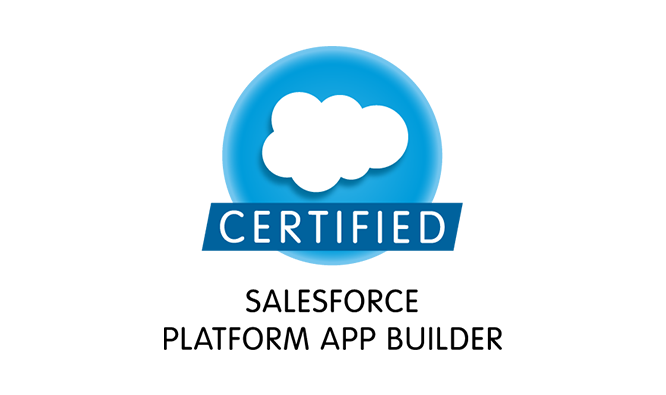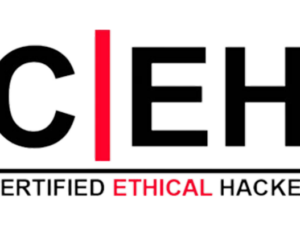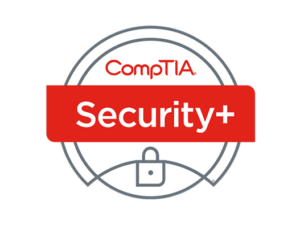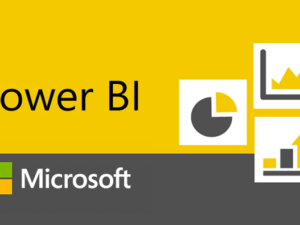This course is designed to ensure that you learn & master the concepts of Salesforce Platform App Builder and pass the certification exam on your first try. Our training will help you learn Salesforce online application development using Force.com fundamentals. The practical hands-on learning approach followed in the course will ensure you get job ready by the end of it.
Salesforce App Builder
- Description
- Curriculum
- FAQ
- Reviews

- Deploy applications and manage changes on the Force.com platform
- Develop new applications using the declarative interface and Force.com fundamentals
- Implement automation, debugging, data validation, and customize apps
- Configure the user interface
This Salesforce Platform App Builder course is suitable for
- Individuals looking to build a career in Salesforce
- App Builders
- Developers
- System Administrators
- Sales Representatives
- Product Managers
Certs Learning’s Salesforce App Builder training offers participants the opportunity to work on live industry-based projects that span across unique industry needs.
Project 1: Implementing a Student Performance Tracking System for College Instructors
Project Scenario:
An Australia-based college wants to track the performance of its students and have it automatically update the instructor to alert the instructor if a student has failed. With Salesforce’s Lightning platform feature, the college wants to use Process Builder for tracking students’ performance. Once the student information is created or updated, an alert message will be displayed on the instructor’s record connected to each student.
Project 2: Implementing a Business Process to capture details of transactions, discounting, and tracking business entries for a company
Project Scenario:
A US-based mobile company wants to use Salesforce to implement a process for discounting and tracking previous entries in Salesforce. The company has decided to track various business entries posted by clients/users using charts on the Salesforce mobile app. Leveraging the benefits of the Salesforce mobile platform, the company wants to capture the details of the transaction in the Salesforce system. Additionally, it wants to track various business entries by charts that can be provided to field-level users on mobile.
-
1Lesson 00 - Introduction to Salesforce
0.1 Introduction to Salesforce
-
2Lesson 01 - Field Types
- 1.1 Introduction to Field Types
- 1.2 Field Types
- 1.3 Modifying Standard Fields
- 1.4 Creating Auto-number Fields
- 1.5 Creating Formula Fields
- 1.6 Creating Roll-Up Summary Fields
- 1.7 Creating Lookup and Master Detail Fields
- 1.8 Creating Checkbox Fields
- 1.9 Creating Currency, Number, and Percent Fields
- 1.10 Creating Date Field and Date and Time Fields
- 1.11 Creating Phone and Email Fields
- 1.12 Creating Geolocation Fields
- 1.13 Creating Picklist and Multi-Select Picklist Fields
- 1.14 Creating Text and Text Area Fields
- 1.15 Creating Text Area Long and Text Area Rich Fields
- 1.16 Creating Encrypted Fields
- 1.17 Creating URL Fields
- 1.18 Quiz
- 1.19 Case Study
- 1.20 Case Study Demo
- 1.21 Key Takeaways
- 1.22 Conclusion
-
3Lesson 02 - Creating Buttons, Links, and Actions
- 2.1 Introduction to Creating Buttons, Links, and Actions
- 2.2 Creating Buttons, Links, and Actions
- 2.3 Creating New Records with Actions
- 2.4 Logging a Call with Actions
- 2.5 Updating a Record with Actions
- 2.6 Creating Custom Buttons
- 2.7 Creating Custom Links
- 2.8 Quiz
- 2.9 Case Study
- 2.10 Case Study Demo
- 2.11 Key Takeaways
- 2.12 Conclusion
-
4Lesson 03 - Salesforce Objects
- 3.1 Introduction to Salesforce Objects
- 3.2 Salesforce Objects
- 3.3 Standard Object Components
- 3.4 Renaming Standard Objects
- 3.5 Modifying Standard Objects
- 3.6 Understanding External Objects
- 3.7 Creating Custom Objects
- 3.8 Quiz
- 3.9 Case Study
- 3.10 Case Study Demo
- 3.11 Key Takeaways
- 3.12 Conclusion
-
5Lesson 04 - Chatter
- 4.1 Introduction to Chatter
- 4.2 Chatter
- 4.3 Chatter Overview
- 4.4 Enabling Chatter
- 4.5 Enabling Chatter Feeds on Records
- 4.6 Configuring Chatter Groups
- 4.7 Creating Customer Groups
- 4.8 Creating a Free Customer Chatter User
- 4.9 Customizing Chatter Email Notifications
- 4.10 Configuring Salesforce to Salesforce
- 4.11 Accepting a Salesforce Connection
- 4.12 Sharing an Account via Salesforce to Salesforce
- 4.13 Enabling Ideas
- 4.14 Configuring Ideas Themes
- 4.15 Enabling Social Accounts
- 4.16 Enabling Libraries and Content
- 4.17 Customizing Libraries and Content
- 4.18 Uploading Documents to Libraries and Content
- 4.19 Configuring Salesforce1
- 4.20 Quiz
- 4.21 Case Study
- 4.22 Case Study Demo
- 4.23 Key Takeaways
- 4.24 Conclusion
-
6Lesson 05 - Visual Workflow, Process Builder, and Schema Builder
- 5.1 Introduction to Visual Workflow, Process Builder, and Schema Builder
- 5.2 Visual Workflow, Process Builder, and Schema Builder
- 5.3 Creating a Visual Flow
- 5.4 Modifying Existing Flows
- 5.5 Creating a Process in the Process Builder
- 5.6 Creating Fields in the Schema Builder
- 5.7 Quiz
- 5.8 Case Study
- 5.9 Case Study Demo
- 5.10 Key Takeaways
- 5.11 Conclusion
-
7Lesson 06 - Security Controls
- 6.1 Introduction to Security Controls
- 6.2 Security Controls
- 6.3 Viewing Object Security
- 6.4 Changing Default Record Access
- 6.5 Sharing Settings
- 6.6 Field Accessibility
- 6.7 Password Policies
- 6.8 Session Settings
- 6.9 Login Flows
- 6.10 Network Access
- 6.11 Activations
- 6.12 Session Management
- 6.13 Login Access Policies
- 6.14 Certificate and Key Management
- 6.15 Viewing Setup Audit Trail
- 6.16 Executing Expire All Passwords
- 6.17 Delegated Administration
- 6.18 Remote Site Settings
- 6.19 Named Credentials
- 6.20 File Upload and Download Security
- 6.21 Quiz
- 6.22 Case Study
- 6.23 Case Study Demo
- 6.24 Key Takeaways
- 6.25 Conclusion
-
8Lesson 07 - Validation Rules
- 7.1 Introduction to Validation Rules
- 7.2 Validation Rules
- 7.3 Creating Validation Rules
- 7.4 Creating Formulas
- 7.5 Creating Error Messages
- 7.6 Quiz
- 7.7 Case Study
- 7.8 Case Study Demo
- 7.9 Key Takeaways
- 7.10 Conclusion
-
9Lesson 12 - Data Management
- 12.1 Introduction to Data Management
- 12.2 Data Management
- 12.3 Importing Leads
- 12.4 Importing Contacts and Accounts
- 12.5 Using Mass Delete
- 12.6 Installing Data Loader
- 12.7 Importing Records with Data Loader
- 12.8 Updating Records with Data Loader
- 12.9 Deleting Records with Data Loader
- 12.10 Exporting Records with Data Loader
- 12.11 Adding a Field in the Schema Builder
- 12.12 Scheduling a Data Export
- 12.13 Creating and Using Sandbox
- 12.14 Mass Transferring Records
- 12.15 Reporting Snapshots
- 12.16 Working with Tags
- 12.17 Quiz
- 12.18 Case Study
- 12.19 Case Study Demo
- 12.20 Key Takeaways
- 12.21 Conclusion
-
10Lesson 09 - Reports
- 9.1 Introduction to Reports
- 9.2 Reports
- 9.3 Understanding Report Formats
- 9.4 Creating a Leads Report
- 9.5 Creating Contacts and Accounts Report
- 9.6 Creating an Opportunity Report
- 9.7 Adding Leads to a Campaign from a Report
- 9.8 Creating a Report Chart
- 9.9 Scheduling Reports
- 9.10 Creating a Campaign Report
- 9.11 Summarizing Report Data
- 9.12 Creating a Report Formula
- 9.13 Exporting Reports to Excel
- 9.14 Quiz
- 9.15 Case Study 1
- 9.16 Case Study 1 Demo
- 9.17 Case Study 2
- 9.18 Case Study 2 Demo
- 9.19 Key Takeaways
- 9.20 Conclusion
-
11Lesson 10 - Dashboards
- 10.1 Introduction to Dashboards
- 10.2 Dashboards
- 10.3 Understanding Dashboard Components
- 10.4 Creating a Dashboard
- 10.5 Refreshing a Dashboard
- 10.6 Modifying Columns on Dashboards
- 10.7 Adding Filter to Dashboard
- 10.8 Managing Access to Reports
- 10.9 Adding a Report as a Dashboard Component
- 10.10 Setting Up Dynamic Dashboards
- 10.11 Enabling Dashboards for iPad
- 10.12 Modifying Report and Dashboard Interfaces
- 10.13 Activating the Report Builder on Profiles
- 10.14 Quiz
- 10.15 Case Study
- 10.16 Case Study Demo
- 10.17 Key Takeaways
- 10.18 Conclusion
-
12Lesson 11 - Lightning Components
- 11.1 Introduction to Lightning Components
- 11.2 Lightning Components
- 11.3 Installing Lightning Components
- 11.4 Lightning Component Capabilities
- 11.5 Lightning Components vs. Visualforce
- 11.6 Quiz
- 11.7 Case Study
- 11.8 Case Study Demo
- 11.9 Key Takeaways
- 11.10 Conclusion
-
13Lesson 12 - User Interface
- 12.1 Introduction to User Interface
- 12.2 User Interface
- 12.3 User Interface General Options
- 12.4 User Interface Sidebar Options
- 12.5 User Interface Calendar Options
- 12.6 User Interface Name Settings
- 12.7 User Interface Setup Options
- 12.8 Quiz
- 12.9 Case Study
- 12.10 Case Study Demo
- 12.11 Key Takeaways
- 12.12 Conclusion
-
14Lesson 13 - Application Lifecycles
- 13.1 Introduction to Application Lifecycles
- 13.2 Application Lifecycles
- 13.3 Key Milestones and Considerations
- 13.4 Using Sandboxes for Development
- 13.5 Using Change Sets
- 13.6 Using Unmanaged Packages
- 13.7 Quiz
- 13.8 Case Study
- 13.9 Case Study Demo
- 13.10 Key Takeaways
- 13.11 Conclusion
-
15Lesson 14 - Change Sets and Deployment
- 14.1 Introduction to Change Sets and Deployment
- 14.2 Change Sets and Deployment
- 14.3 Outbound Change Sets
- 14.4 Inbound Change Sets
- 14.5 Deployment Settings
- 14.6 Deployment Status
- 14.7 Eclipse IDE
- 14.8 Quiz
- 14.9 Case Study
- 14.10 Case Study Demo
- 14.11 Key Takeaways
- 14.12 Conclusion







